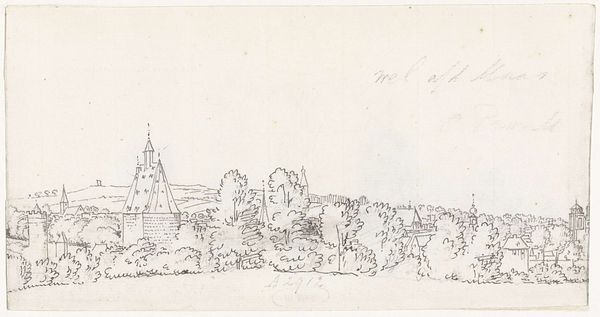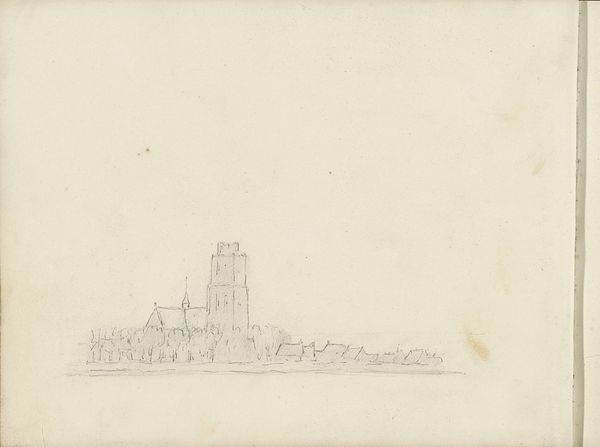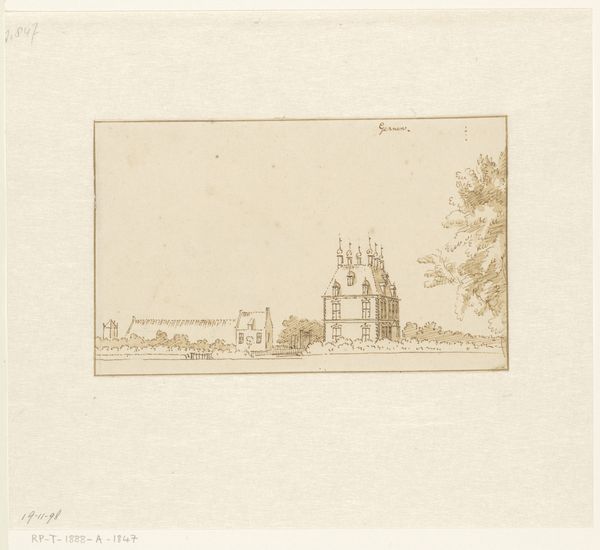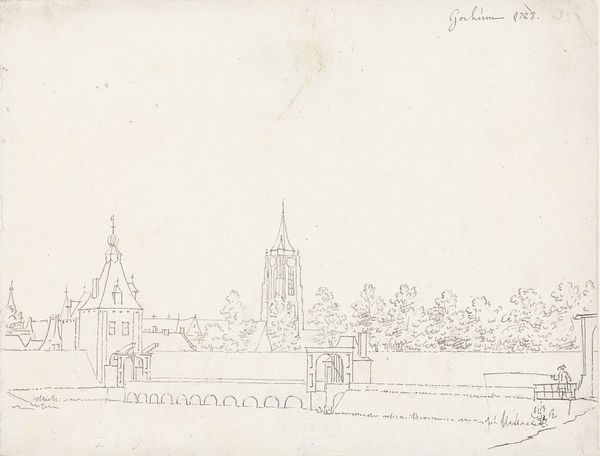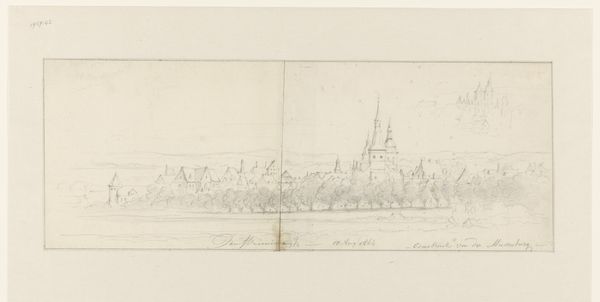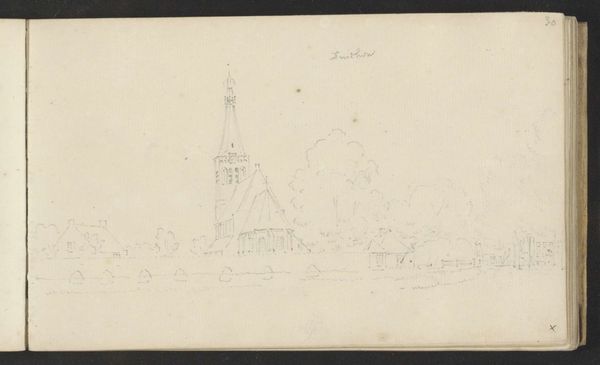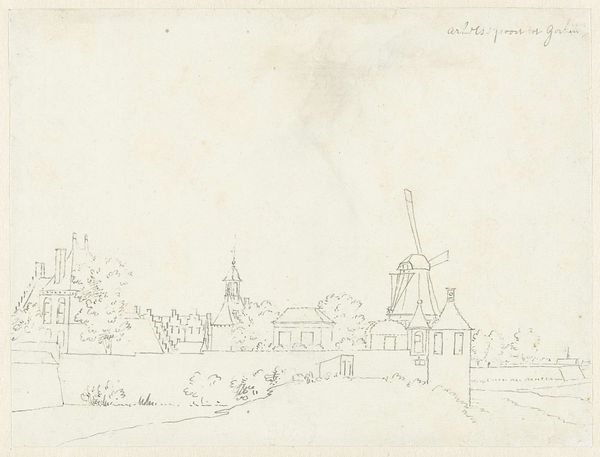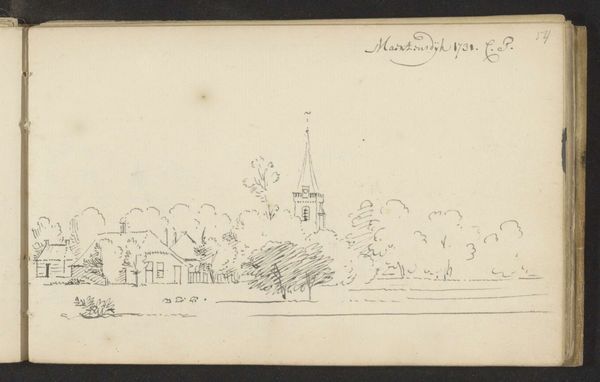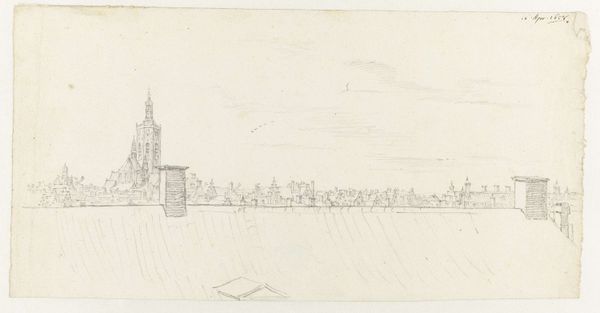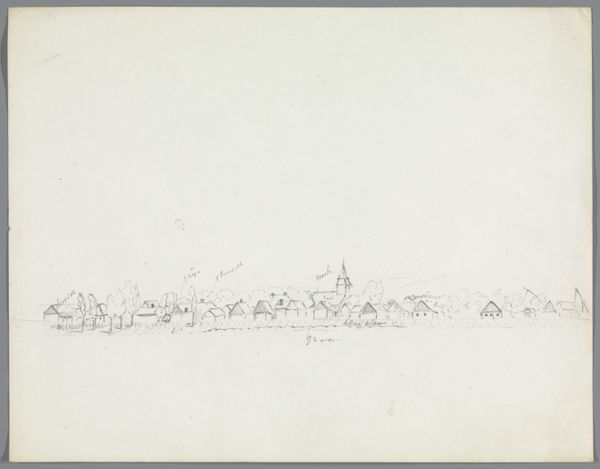
drawing, pencil
#
drawing
#
aged paper
#
quirky sketch
#
dutch-golden-age
#
old engraving style
#
hand drawn type
#
landscape
#
personal sketchbook
#
idea generation sketch
#
sketchwork
#
pencil
#
ink colored
#
line
#
sketchbook drawing
#
cityscape
#
sketchbook art
#
realism
Dimensions: height 144 mm, width 199 mm
Copyright: Rijks Museum: Open Domain
Curator: Before us is Cornelis Pronk's "Gezicht op IJsselstein," a pencil and ink drawing that resides at the Rijksmuseum. Pronk likely created this sketch sometime between 1701 and 1759. What are your initial thoughts? Editor: A wisp of a memory... I get the sense of someone quickly capturing a scene before it vanishes. The drawing style is very light, the artist seems focused only on the very specific forms. Is this from a sketchbook perhaps? Curator: That’s a fantastic observation. Its sketchy nature does indeed suggest a page torn from a sketchbook. The work wonderfully illustrates a Dutch cityscape. We see the silhouette of IJsselstein against what I imagine is the flat Dutch horizon, dominated by a couple of imposing towers, each quite distinct. The scene is peaceful and sparse. Editor: The towers definitely stand out. Their prominence to me underscores their symbolic importance – the church and perhaps a civic building? Towers in art are such interesting emblems of power, aspiration, and sometimes, the division between the earthly and the divine. The way Pronk has represented them seems quite respectful. Curator: I think so, too. I see not just respect, but a real affection in how meticulously, yet efficiently, Pronk captures each architectural detail with just a few lines. You almost feel like you are there, alongside him, seeing what he saw, finding fascination in a mundane urban view. Editor: Yes, “fascination” nails it. It is interesting how he can make us focus on architectural elements but at the same time on the sense of urban space that almost feel as relevant today as it may have in the eighteenth century. What's amazing about symbols is how they persist through time, connecting us with the intentions and emotional landscapes of those who came before. We’re deciphering not just an image of IJsselstein, but a shared human experience across centuries. Curator: A human experience indeed. Looking at this drawing reminds us that even seemingly simple sketches can act as incredibly powerful cultural conduits. It shows, to me, the true art is in seeing. Editor: Absolutely. And I see how a fleeting glimpse of a Dutch town on paper becomes a shared journey through time, shaped by the enduring language of symbols.
Comments
No comments
Be the first to comment and join the conversation on the ultimate creative platform.

